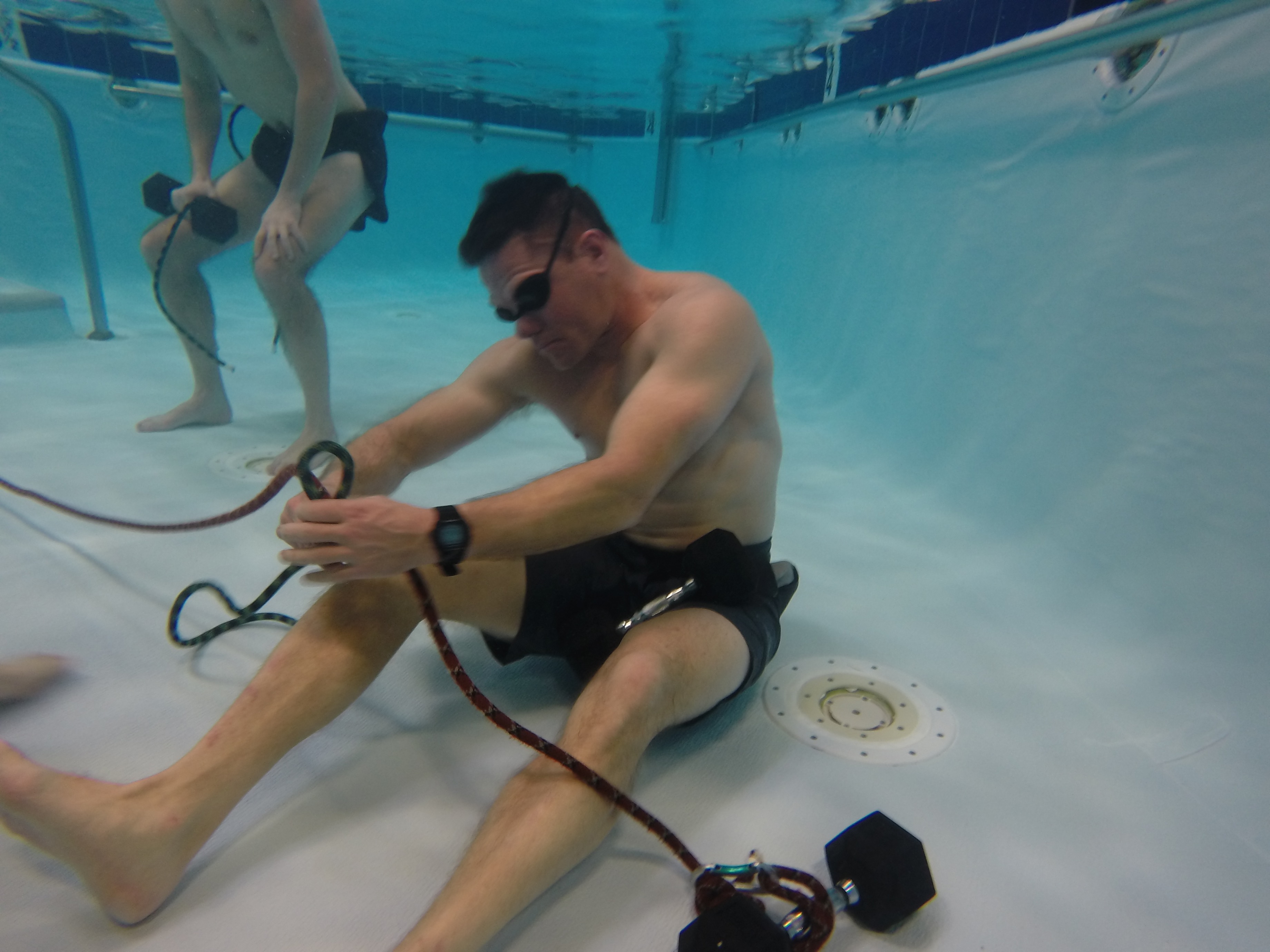By Rob Shaul
Through the Mountain Tactical Institute, we have several tactical-focused studies in the works which we hope to complete this fall and winter. I wanted to present them to you here. As well, we wanted to open a line of communication to our community and ask for study ideas.
To review, we’re interested in “Mission Direct” research – findings which have real world application to tactical events.
1) Does fear control gained through water confidence training transfer outside the pool?
We began exploring this idea last winter and hope this summer to take the idea to another level.
Water has a unique way of instilling fear, and water confidence training is all about controlling the fight or flight urge, staying under control, and completing the job/task.
We hope to pair water confidence training with a defined, controlled, force on force tactical drill using airsoft weapons with civilian subjects. Force on force, with the stings from airsoft pellets can also be scary for those new to it.
In general, we plan to put the subjects through the airsoft drill recording their heart rate throughout. Then put them through 2-3 water confidence sessions, then re-do the force on force drill and measure whether or not average heart rate decreased.
The military has used water confidence training for years, but only for water-based jobs and selections. If we find water confidence training can lead to fear control which is transferrable beyond the pool, it could be a tool to assist athletes prepare for combat, firefighting, LE apprehensions – and other situations which have an innate, high, fear component.
2) Tactical Recovery Positions
This week we began experimenting in the gym with interval resting positions. We found that athletes’ heart rates recovered better when lying prone, over kneeling and standing. Next we want to take this to the tactical level – short sprints, and shooting – likely testing it using our Range Fitness protocol.
There’s some Mission Direct potential here – for example, if we find a kneeling position where the athlete sits back on his heels works best to decrease heart rate between running and shooting, we could recommend it to tactical athletes downrange, SWAT teams, etc. We’ll do a pilot study here first, and next work with either a tactical team of some type, or shooting instructors at a major East Coach training facility for a more formal study. We hope to also investigate and experiment with pre-shooting breathing techniques as a way to slow heart rate and/or improve shooting performance. We’ve already reached out to the US Biathlon team for their insight.
3) Ruck Deep Dive II
We’re still looking for partners to complete our Ruck Deep Dive study. We’ve got two tentative possibilities, but none have confirmed yet. To review, we hope to identify which fitness attribute – body mass, strength or aerobic fitness most translates to rucking performance. With this knowledge we can design Ruck Deep Dive III – testing training protocols around Deep Dive II’s results. Want to help? We need 40 athletes total, but can split between two units – so at least 20 “lab rats”. Email me if interested. rob@strongswiftdurable.com
4) Strength’s part in Durability
My programming approach for years has been that strength is 80-90% of durability. We need to test this. The idea would be to do a relative strength test to a group of tactical athletes just prior to deployment or selection, and then track injuries through the deployment or selection and develop a correlation back to their relative strength score on the assessment.
We’ve spoken to cadre at a couple military schools about this but have not formalized a visit. Email if interested.
5) Work Capacity Standard for Tactical Athletes
We have already developed relative strength standards for military athletes, and begun work on developing endurance standards. Between the two is work capacity.
The mode will likely be repeated sprints under load. We’re not only interested in max reps, but in the ability to recover between efforts. Our coaches began testing this idea earlier this summer, using themselves as lab rats.
The most recent test involved down-back 15 yard shuttle sprints for 20 minutes. Between reps, the coach dropped to a kneeling position and couldn’t begin his next rep until his heart rate dropped under 65% of his max heart rate. The “measure” was the total reps at 20 minutes, but with this heart rate governor. We’re still developing this idea the Naval Academy is interested in working with us as we move forward.
6) Situational Awareness and “Flow”
Many understand the concept of “flow” as it pertains to athletics and team sports. Athletes get into a “zone” where the playing field slows down, they can anticipate events, and act accordingly. Our high level mountain athletes describe “mountain awareness” – how, after years of experience, they’ll understand the mountain situation, and be able to act toward safety when trouble brews.
We’ve heard from experienced tactical athletes who experience a similar situational awareness in combat or other tactical situations.
The key component between these two groups is lots of experience. Unfortunately, for both the mountain and the battlefield, experience comes with mistakes and mistakes can get you killed. Is there a way we can shorten this learning curve and move tactical athletes onto an accelerated path to situational awareness? We’re not sure, but feel the idea is well worth exploring.
Your Ideas?
We’re certainly interested in research ideas you may have – especially those with a “Mission Direct” focus. Our reach is broad, and increasing all the time. Please email research ideas to rob@strongswiftdurable.com.

